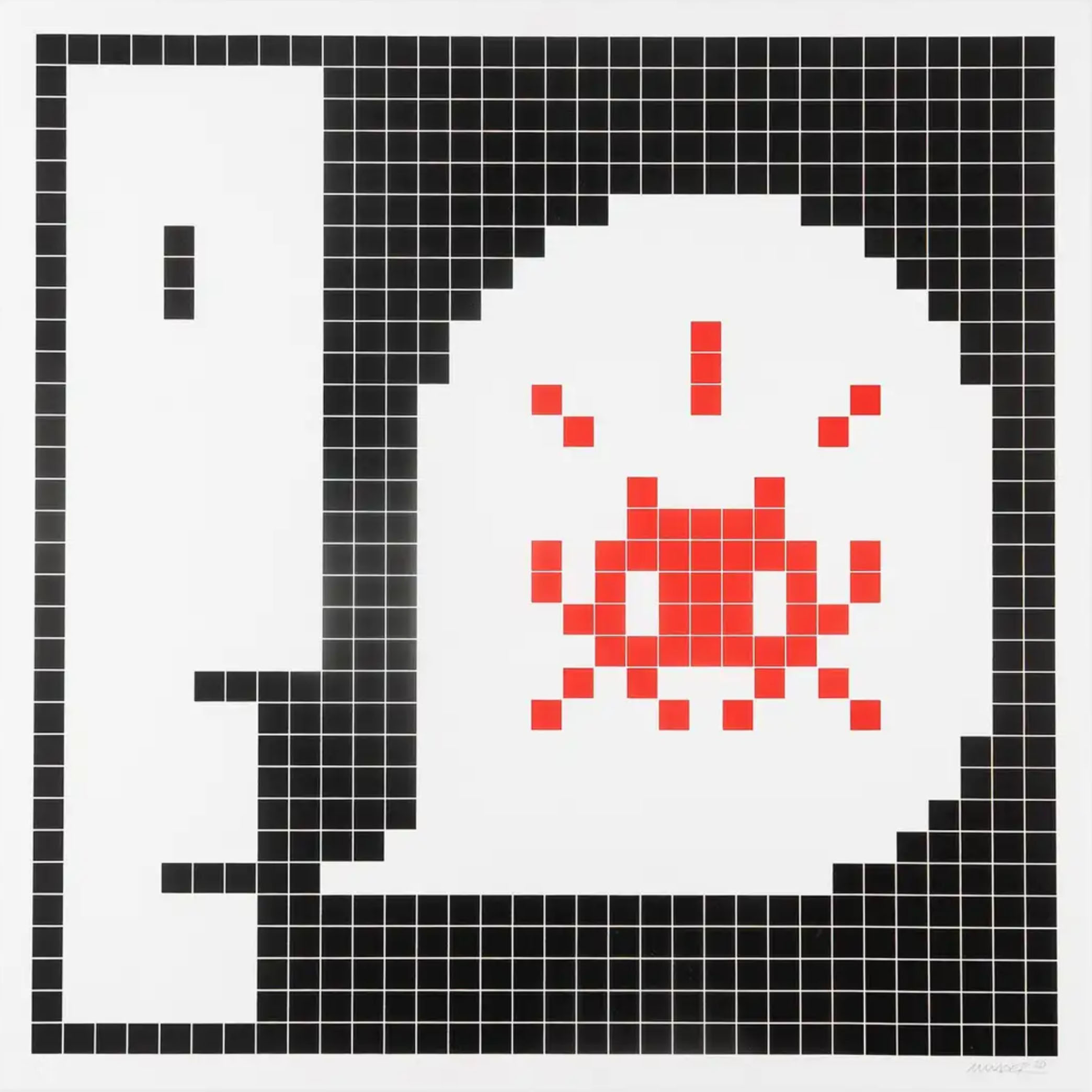World-renowned British street artist Banksy has gained recognition for his thought-provoking and often controversial works of art. One of his most rebellious pieces is the “I Fought The Law” screen print, created in 2004.
Banksy’s “I Fought The Law” screen print exemplifies the artist’s signature style, featuring bold images and stencils with a limited colour palette of black, white, and bright orange. The eye-catching image draws attention to the message written on the wall, which is a direct reference to the punk rock song “I Fought The Law”, embodying the spirit of rebellion against societal norms and authority. The perpetrator is shown lying on the ground, pinned down, with his paintbrush covered in orange paint lying next to him.
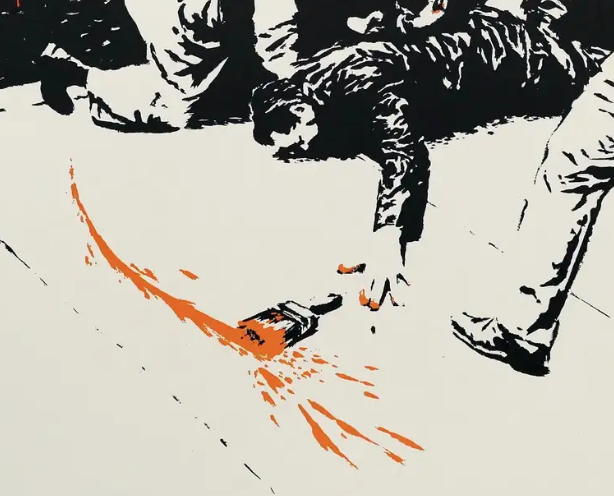
Banksy. I Fought The Law Screenprint. Image Copyright Banksy
“I Fought The Law,” by Sonny Curtis
Written in 1958 by Sonny Curtis of the Crickets, the song “I Fought the Law” was popularised by a cover by American rock and roll band Bobby Fuller Four in 1966. Curtis wrote a “crime-doesn’t-pay scenario” of a man in desperate need of money. His brief reign of lawlessness, “Robbin’ people with a six-gun”, leads to his imprisonment and hard labour, “Breaking rocks in the hot sun“.
“I Fought The Law,” by The Clash
It was British band The Clash’s cover of “I Fought The Law” that transported it into a punk anti-establishment anthem. “I Fought The Law” was recorded and released by the punk band in 1979 for the band’s 1979 EP “The Cost of Living”. The song’s message was particularly relevant at the time of its release, as it coincided with a time of social unrest, political upheaval, and clashes between the police and young people. The chorus, “I fought the law, and the law won,” emphasises the idea that sometimes fighting against the system is a losing battle. “I Fought The Law” by The Clash has been a hallmark of punk rock and rebellion since its inception.
The Clash’s “I Fought The Law” via YouTube.
John Hinckley Jr’s Failed Assassination of President Ronald Reagan
In Banksy’s “I Fought The Law” screen print, the artist references the dramatic scene of John Hinckley Jr.’s failed assassination attempt on President Ronald Reagan in 1981. The artwork features a visual reference to the infamous event captured by news camera footage.
Hinckley Jr fired all six shots from his Röhm RG-14 six-gun revolver at the President on 30th March 1981, as he left the Washington Hilton. Eventually, the last ‘devastator’ bullet hit the rim of the limousine door and ricocheted into President Regan whilst he was ‘safely’ in his limousine after being pushed into the car by the special agent in charge, Jerry Parr. Hinckley Jr was infatuated with young actor Jodie Foster and identified with protagonist Travis Bickle from the movie Taxi Driver. This motivated him to carry out the attack due to his erotomania and thinking he would be Jodie Foster’s equal if he became a national figure.
In Banksy’s depiction, the subdued perpetrator is a graffiti artist rather than an assassin. While each wields their weapon of choice, Banksy opts for a paintbrush instead of a six-gun revolver. Nevertheless, both actions are viewed as criminal by law.
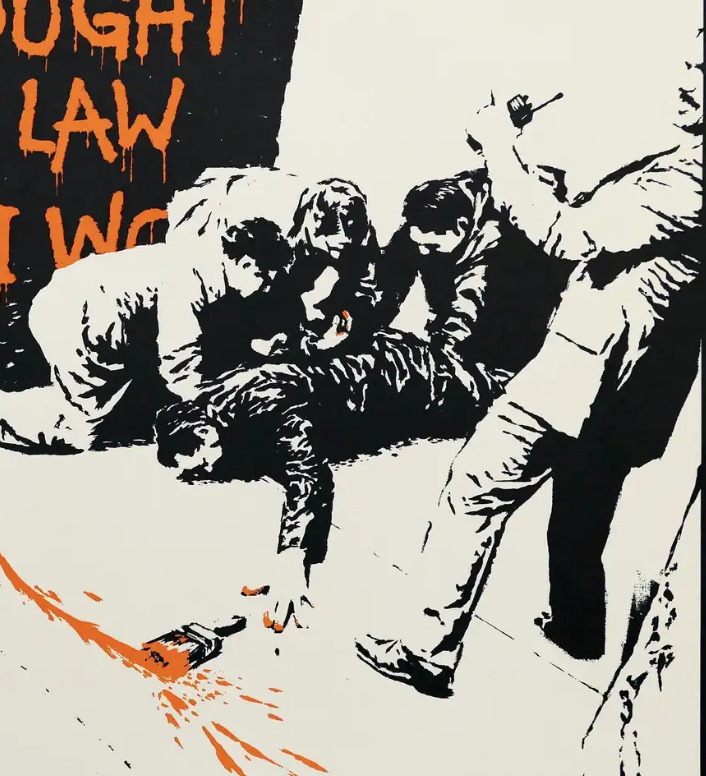
Banksy. I Fought The Law Screenprint. Image Copyright Banksy
“I Fought The Law”… and I Won
by Banksy
In the screen print “I Fought The Law”, Banksy flips the narrative in his work, replacing “And the Law Won” with “And I Wo(n)” to suggest that he has achieved success as a graffiti artist despite facing challenges and opposition. The phrase “I Fought The Law, And I Won” may represent the artist’s journey and the rebellious, non-conformist spirit of graffiti art. Banksy’s success in establishing himself as a significant figure in the world of graffiti art is a testament to his talent and perseverance despite the art form being considered illegal and frowned upon by the law.
In typical Banksy fashion, the artwork features a satirical element, with the secret service men blocking our view of whether the word “won” was completed or if the artist was apprehended before finishing the act, a reminder that Banksy still faces the risk of legal consequences for his work.
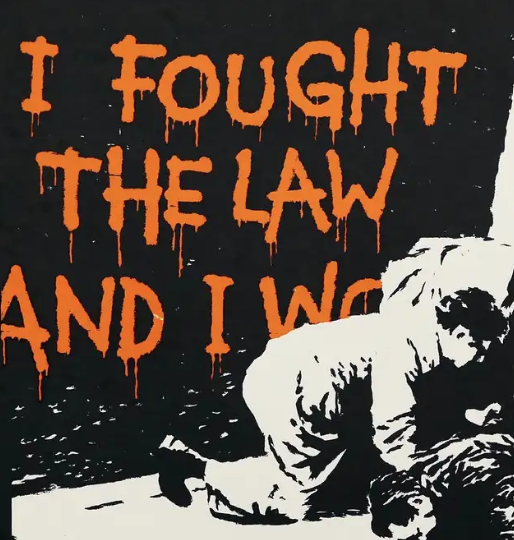
Banksy. I Fought The Law Screenprint. Image Copyright Banksy
“I Fought The Law”
Artist: Banksy
Title: I Fought The Law
Year: 2004
Medium: Screenprint in colours on wove paper
Size: 70×70 cm (27 1/2 x 27 1/2 inches)
Publisher: Pictures on Walls
Main Edition: Signed Edition of 150, Unsigned Edition of 500
AP Colour Editions: Orange/Pink/Red/Yellow Signed Edition of 8
VIP AP Edition: Silver
Uncut AP: 26 signed APs (various colourways)
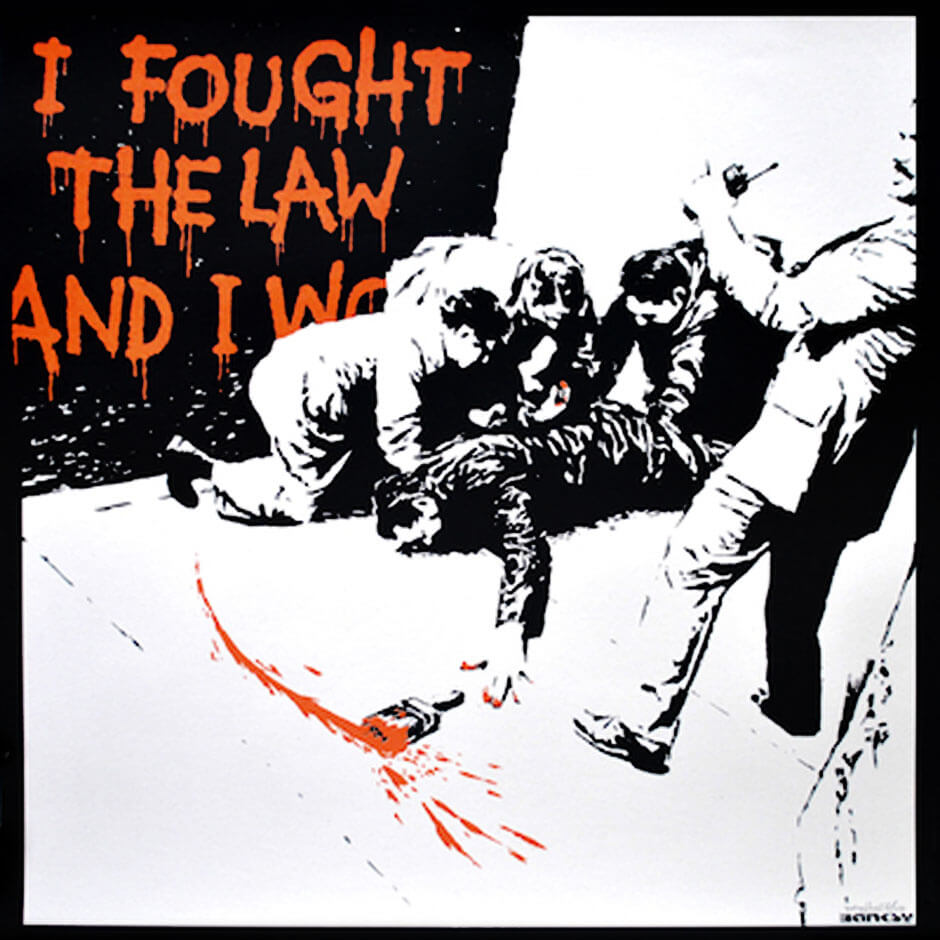
Banksy. I Fought The Law Screenprint. Image Copyright Banksy
Banksy’s “I Fought The Law” screen print is a powerful commentary on the creativity and artistic expression of societal norms and conventions in graffiti art. The artwork highlights the rebellious and non-conformist spirit of graffiti artists who express themselves through their art, even if it means facing legal consequences like imprisonment or fines. Incorporating the original song “I Fought the Law” suggests the absurdity of graffiti artists’ being able to face imprisonment akin to assassins or robbers.
We would like to invite you to explore our extensive collection of Banksy’s artworks at our online gallery, including “I Fought The Law“, which showcases Banksy’s signature style of satirical and politically charged graffiti. If you have any enquiries, please do not hesitate to contact our team, who will be delighted to assist you in finding that elusive print you have been looking for.
